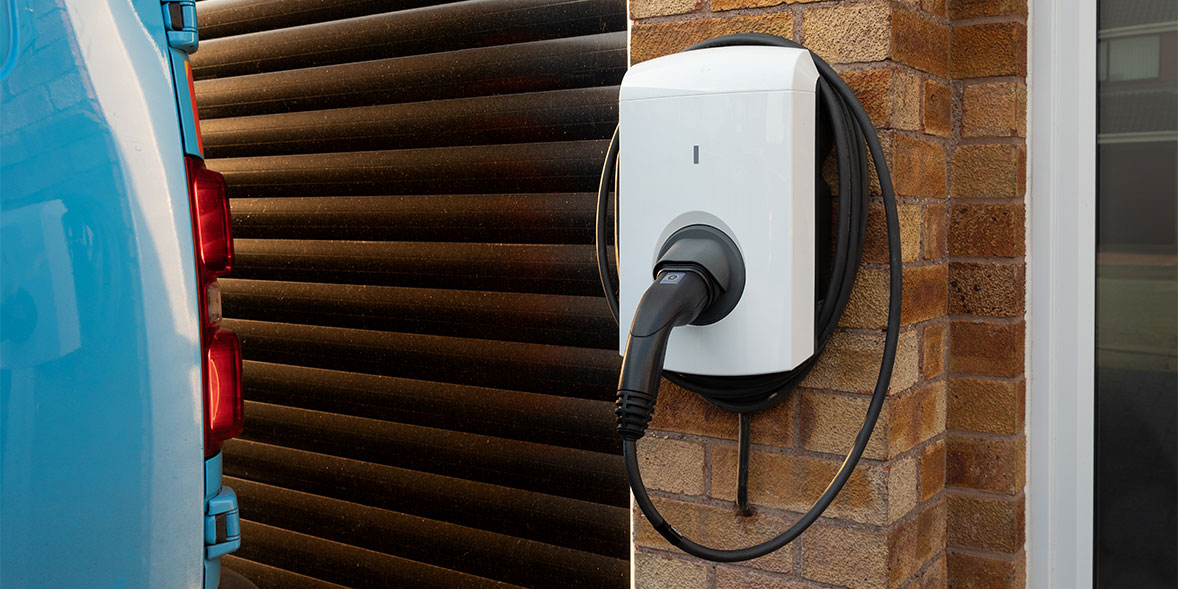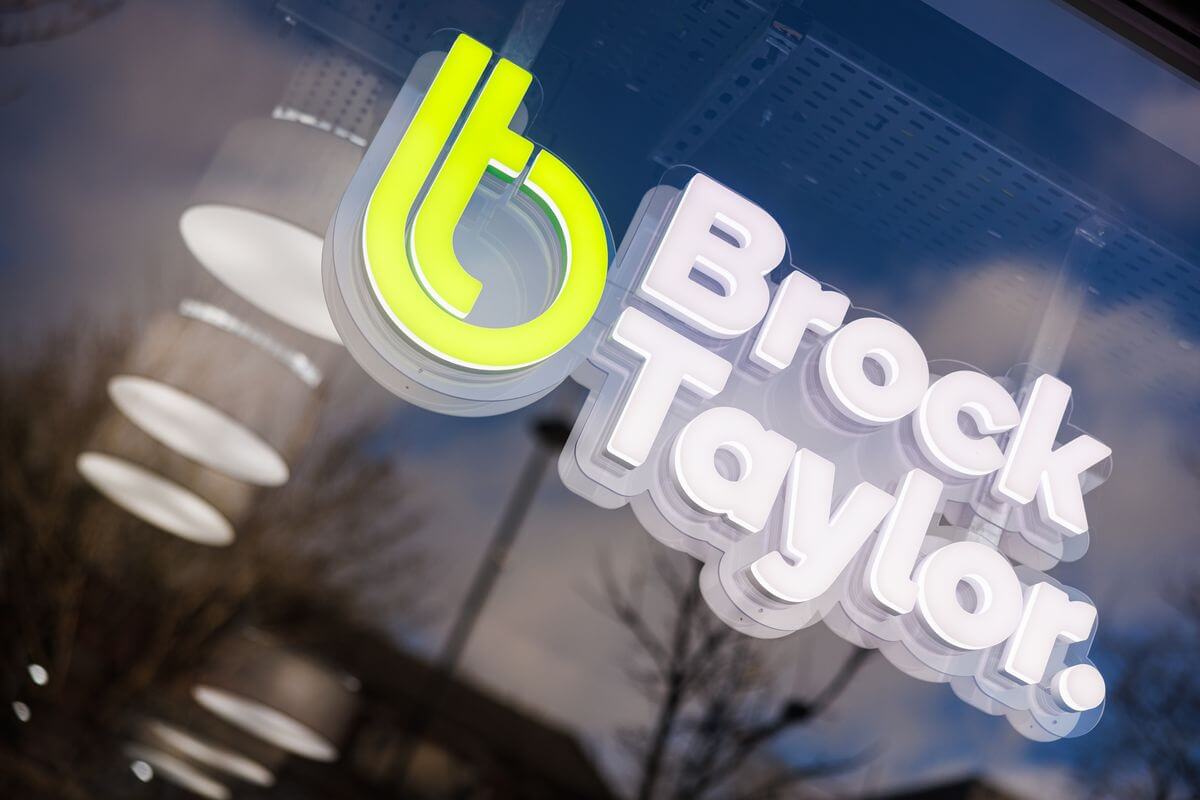Your guide to electric vehicle (EV) charging
Electric vehicles (EVs) and hybrid cars, which are greener alternatives to cars that run on petrol and diesel, are becoming more popular in the UK.
In fact, the number of property listings on Rightmove which include a mention of electric car charging points has grown dramatically in recent years – a 592% increase in 2023, compared to 2019.
Plus, recent government figures show that one in five sold are now electric.
EVs and plug-in vehicles are purely powered by their electric batteries, while hybrid cars still use conventional fuel, but also contain a battery which is charged during transit.
In September 2023, the government laid out targets stating that 80% of new cars and 70% of new vans sold in the UK need to be electric or zero-emission by 2030. By 2035, all new cars and vans sold will need to be.
According to the government there are almost 50,000 public charging points across the UK. However, to increase the number of electric cars on the road, much more than this will be needed.
To help you decide if an electric car is right for you, we’ve outlined how much home EV chargers are, how they work, where you can find public EV chargers, and the grants that are available.
What are EV chargers and how do they work?
An EV charger is used to charge any vehicle that’s powered by electricity – whether that be a hybrid, or fully electric. So rather than heading to the pump and filling a car with diesel or petrol, it’s plugged into a charger instead.
Whether home-based installations or a public EV charging stations, the technology and process involved with EV charging is very similar. EV chargers are either hardwired to the electrical grid, or a 240v mains outline. They pull an electric current from this source and deliver it directly to your vehicle’s battery – much like the way in which other electrical appliances and devices are powered and charged by plugging into the wall.
Some EV chargers based at public sites such as service stations and car parks are known as rapid charging units. These can provide up to 80% charge in as little as 20-30 minutes. The main technological difference is that they are powered by a direct current (DC), and can go up to between 50kW and 350kW in power, whereas standard fast chargers are powered by an alternating current (AC) powered, and typically rated between 7kW and 22kW.
Can you charge an electric car using a normal plug?
It is possible to charge your electric car or van at home using a conventional three-pin plug, but it’s important to not use an extension lead, as it’s high risk. Instead, you should make use of an electric vehicle service equipment (ESVE) cable. These are typically five or 10 metres long, with a plug that will fit into the charging socket of the EV.
This method of charging takes longer. A domestic 2.4kW socket can take over 24 hours to fully charge an EV battery, so can be used for topping up the battery.
How long does it take to charge an electric car at home?
If charging through a conventional plug and ESVE cable, it can take a whole day or more to complete a charge.
The other way you can charge an EV at home is with a dedicated EV home charger. These are guaranteed to offer a faster charge than a three-pin plug, because they operate at around 7kW in terms of power. A domestic plug, on the other hand, will only charge at a maximum of 2.3kW due to limitations imposed by most EV manufacturers. This means that home chargers can be expected to charge three times faster than using a normal plug and ESVE cable.
Some home chargers operate with a three-phase electricity supply, meaning they can charge up to three times faster than standard home chargers, and nine times faster than conventional plugs. Most homes, however, will be perfectly well suited to standard home chargers.
Can you use an electric car charger without a driveway?
EV charging is more difficult if you lack access to off-street parking where you can safely plug in – either through an ESVE cable or an EV charger.
However, this should not deter people without driveways or off-street parking options. There are many alternative EV charging methods which could provide you with a viable solution, depending on where you live and your routine.
Some of your options include:
- Charge on the street: Many cities and boroughs in London have installed EV chargers next to roadside parking spaces. Some are even installed in lampposts along residential streets.
- Charge in a residential car park: If you live in an apartment with a residential car park, it is worth speaking with the building or landowner to see if EV charging stations can be added.
- Charge when you shop: Many supermarkets and retail estates now have dedicated EV charging stations. Although you may not get a full charge from this, topping up for a couple of hours while you are out and about can be extremely helpful.
- Charge at a work: While this won’t be an option for everyone, many workplaces are investing in EV charger installation as an incentive and benefit for their employees and people using the site. Charging at work can make it very easy to own an EV, as you will be able to return home on a full charge. This is ideal for people without their own EV charger.
- Share a charger with a friend or family member: If somebody you know has their own driveway and an EV, or is considering an EV, it could be worth establishing a joint arrangement.
- Join a public charging network: There are also several public EV charging networks spread across the UK. Signing up is usually straightforward and is typically managed via an app or membership card which facilitates a subscription or pay as you go service. Make sure you do your homework prior to joining – check where their EV chargers are located and how the scheme operates before committing.
Can anyone install an EV charger?
No. If you are considering installing an EV charger at your home, there are rules and regulations that need to be followed.
You should look for a qualified electrician who has completed specialist EV charger installation training. Before the EV charger is installed, they will need to visit your home to take measurements, check where the fuse box is, and identify the best location for the charger. Once this information is confirmed, they should also be able to provide you a quote for the job.
No specialist expertise is required to use a conventional ESVE cable, as this is simply plugged into your mains electricity.
How many public EV chargers are there at the moment?
If you don’t have space or wish to install an EV charger at home, there are public EV charging stations in various locations available, but they’re considerably more expensive to use than an at-home charger.
The UK government maintains an up to date map of charging devices that details the density of EV chargers in each local authority area.
As of October 2023, there were 49,220 public chargers around the country. This is around 40% more than there were in 2022, with the government seeking to have 300,000 EV chargers installed by the end of the decade.
Are EV chargers expensive to run?
The cost of charging your electric car or van will vary depending on several factors. These include the model of your vehicle, its battery size, and the type of EV charger you have installed.
But as a general guide, based on a car travelling around 10,000 miles per year, Energy Saving Trust estimates you could expect to pay around £520 each year if you charge your car exclusively at home. This is markedly cheaper than relying solely on public EV charge points, which could cost around £10,300 per year. Charging 70% at home and 30% at public charging stations would cost approximately £755.
Getting the most out of each charge will also help you to save money. There are several tips and tricks to help you extend the range of your EV. These include anticipating the road ahead to avoid harsh acceleration and braking, cutting down on heating and air con by pre-heating/cooling, and getting to grips with your EV’s energy-saving features and eco-modes.
What’s it like having an EV charger?
Heather lives with her family in Buckinghamshire and installed a 7KW EV charger around a month after they bought their electric car in 2020. It’s attached to the side of their garage, so they’re able to charge their car while it’s parked on their drive.
“It takes around 12 hours to do a full charge. There are more powerful home chargers available than ours, but we went for this one as we decided that this would work well for our lifestyle. We’re happy for the car to be charging overnight and wouldn’t ever really need to charge the car more quickly than this. We just have to be organised, and remember to plug in when we get home from work!” adds Heather.
“It costs around £13 for a full charge, which will get us around 180 miles. When it’s very cold, getting the battery to warm up and having the heater on uses up some of the charge. But ultimately, we’re saving a lot compared to the running costs of driving our old diesel car.”
Are there any grants available for electric car chargers?
There are grant schemes available to help with the cost of acquiring an EV charger. This includes a government-backed £350 off the cost of homeplace charge points for people living in flats.
Businesses can also help to lower charging costs for their employees by installing EV charging infrastructure at their sites. Grants are available to support this, including the Electric Vehicle Infrastructure Grant for Staff and Fleets and Workplace Charging Scheme.
In addition to support on charging infrastructure, the UK government has introduced several schemes to lower the upfront costs of owning an EV.
For example, there is a plug-in van grant of up to £2,500 for small vans, and £5,000 for large vans, which is in operation until at least 2025. Grants are also available for taxis, motorcycles and mopeds, wheelchair access vehicles, and trucks.
All information provided by Rightmove


 By
By 

 By
By 
Share this with
Email
Facebook
Messenger
Twitter
Pinterest
LinkedIn
Copy this link